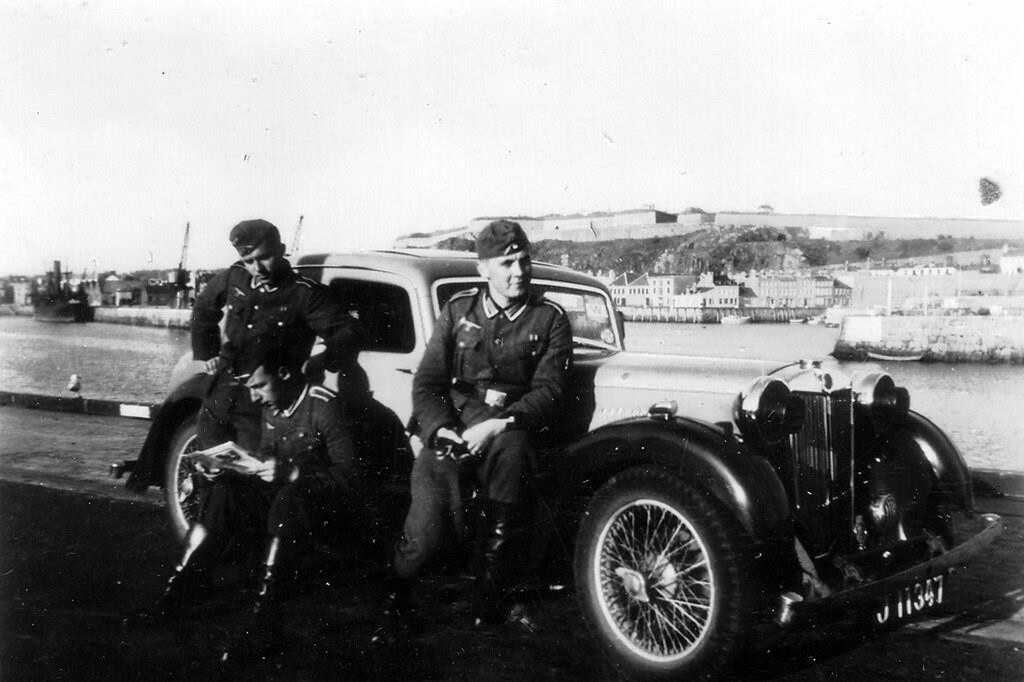Last year marked the 80th anniversary of the first and the 75th of the second. Sadly, coronavirus put paid to most of the Liberation Day plans and the commemoration itself was understandably restrained.
The title of this short introductory article is perhaps misleading, on two scores: firstly, because there was in reality little civilian motoring in Jersey between 1940 and 45; and secondly because such motoring as there was has been amply covered in previous articles, and elsewhere. But it is important to set the scene for what followed last year, being a series of accounts of cars and other vehicles that by hook or by crook survived those long, grim years.
As the German armed forces swept across France in June 1940 it became clear that the Channel Islands faced an imminent threat of invasion. Many residents, especially those of English origin, were evacuated to the mainland, leaving behind homes and possessions, often including motor cars that were abandoned at the Harbour and Airport as their owners hurried to embark on ships and planes. Once the Germans had established themselves, they swiftly took control of all petrol stocks, and in September 1940 an order was issued stating that ‘Civilian vehicles may only be used in the general public interest. Journeys which are not of absolutely vital necessity are forbidden.’ A special permit was required for continued use of a ‘civil motor vehicle’ and these were issued only to doctors, senior officials and a few others who could make a convincing case for exemption.
Swiftly too the authorities started to requisition private cars. Newer models, especially those with larger bodies, were mostly shipped to France for use as staff cars, though a few stayed on the Island; more sporting machines were often purloined by young German officers for their own use. Older cars were generally crushed, the scrap steel and other components being shipped to France to help meet the insatiable needs of the German war machine.
A few vehicles survived these culls and either remained in use through the Occupation or were concealed by their owners in barns, sheds and other outbuildings. Some of their stories are told in the accounts that follow.
In October 1941 a further order was issued by the Field Commandant requiring the surrender of all tyres including ‘any used rubber cover or tube constructed for use as a tyre or part of a tyre of a motor vehicle or a bicycle’, unless beyond repair. For those still clinging on to their cars – surely a dwindling number – the rule of the road was changed from left to right, and in March 1942 a new speed limit of 27kph (15mph) was introduced in St Helier.
As petrol shortages became increasingly acute, a few enterprising motorists adapted their cars to run on gas or charcoal. Kits were obtained from France for the purpose.
Following the liberation of Normandy in November 1944 all fuel and other supplies from France ceased and the last civilian cars left the road. By the time the Channel Islands were liberated in May 1945, only about 500 gallons of fuel a week were available for civil use.
But there were still 55,000 gallons in store, which the departing Germans handed over to the States.
Only 16 new vehicles had been registered in the preceding five years, and the total number had fallen by 94% as cars were hidden, seized, scrapped or laid up. But by the end of 1945 vehicle numbers had recovered to half their pre-war total, and they had exceeded it by the end of 1947. Life was returning to normal – and the nightmare of 1940–45 was starting to fade into history.
As much as last year Occupation motoring history could only be found in print, this year, as we slowly emerge from the pandemic, as much as in 1945, we can once again take out our historic cars and celebrate in true spirit the 75+1 Anniversary of the Liberation and our return to the new normal of post-Covid life.






